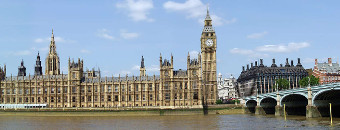Shortage of Certificates of Sponsorship for UK Tier2 work visa since December 2017
This is a purely mathematical problem. Every year since 2011, 20700 Certificates of Sponsorship (CoS) are issued, the total being split into monthly allocations during the year. If fewer people apply for a british Tier2 work visa, remaining Certificates of Sponsorship are available the following month and like this until the end of the fiscal year, which begins in April. So if the demand remains low there are mathematically more certificates available in the end of the fiscal year.
Since 2015 there was no problem of shortage as the annual limit was always greater than the demand, but the trend began to reverse in June 2017 according to The Migration Observatory at the University of Oxford, when the number of visas awarded began to exceed the number of CoS available.
However, there was still a reserve as long as the unused CoS of 2016 fiscal year and the beginning of 2017 were carried forward from one month to the next one: the Certificates of Sponsorship could still be awarded, despite the sharp rise in Tier2 work visa applications.
This reserve ran out in December 2017, and since then the lack of Certificates of Sponsorship is reached before the end of each month, while the demand is constantly increasing. The only hope is when any previously distributed Certificate of Sponsorship are not awarded, and become available again after a period of 3 months. There were only 10 reallocations for April 2018.

British Tier2 work visa : incertainty for the next months
The direct consequence of this Certificate of Sponsorship shortage is that the Home Office has become much more demanding and prioritises UK Tier2 work visa applicants on the Shortage Occupation List (130 points), and then jobs that require a PhD (70 poins), as well a good level of salary: the higher it is, the more points are awarded.
Until the end of 2017, the minimum Tier2 visa requirement was 21 points, rising up to 55 points in December 2017, and to 46 points in April 2018.
Another side effect is the rise of the minimum annual salary required for offered positions. In 2017 the minimum was £ 30,000 (£ 20,800 for graduate jobs). It went up to £ 55,000 in December 2017 and more than £ 60,000 in March 2018. However the level required may fluctuate depending on demand since it was £ 50,000 for January 2018, the trend probably will not change in May, with only 1975 Certificates of Sponsorship available.
And since European citizens are generally better paid for similar jobs than non-Europeans, British companies are reluctant to pay non-Europeans when the CoS minimums reach these European levels. This directly affects small and medium businesses that simply can not afford to hire skilled workers with such high pay levels.
As a result, Tier2 visa applicants with a job offer, whose salary does not meet these conditions are systematically rejected, except if the position was on the Shortage Occupation List or if the position was open to a PhD graduate. Only posts with high salaries and qualifications are therefore filled. Employers themselves are uncertain because of the fluctuation of this minimum level as they can not know it in advance and plan their recruitment campaigns on it. Of course, this worsens the economic and political class. One of the solutions would be to increase the annual limit of the Certificate of Sponsorship awarded and to exempt certain professions from these selection criteria, particularly in Health Service, which is strongly affected by this situation.
This shortage obviously does not concern UK Tier4 general student visa who can switch into Tier2 at the end of their course, a dependent partner of someone with a Tier 4 visa, Tier2 visa holders who wish to change their employers, or Tier1 UK visa holders, all applying directly from within the UK.
